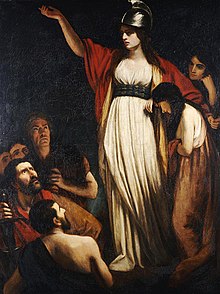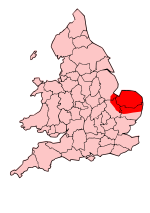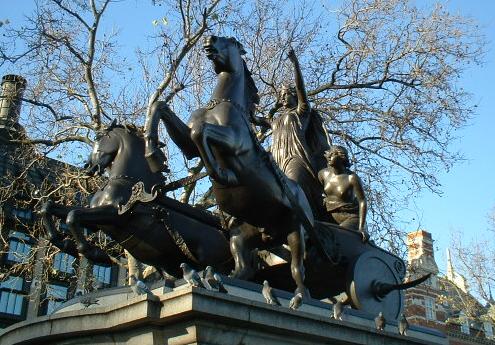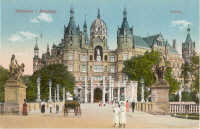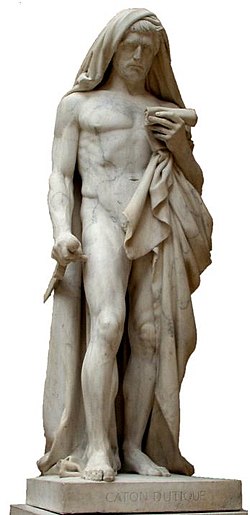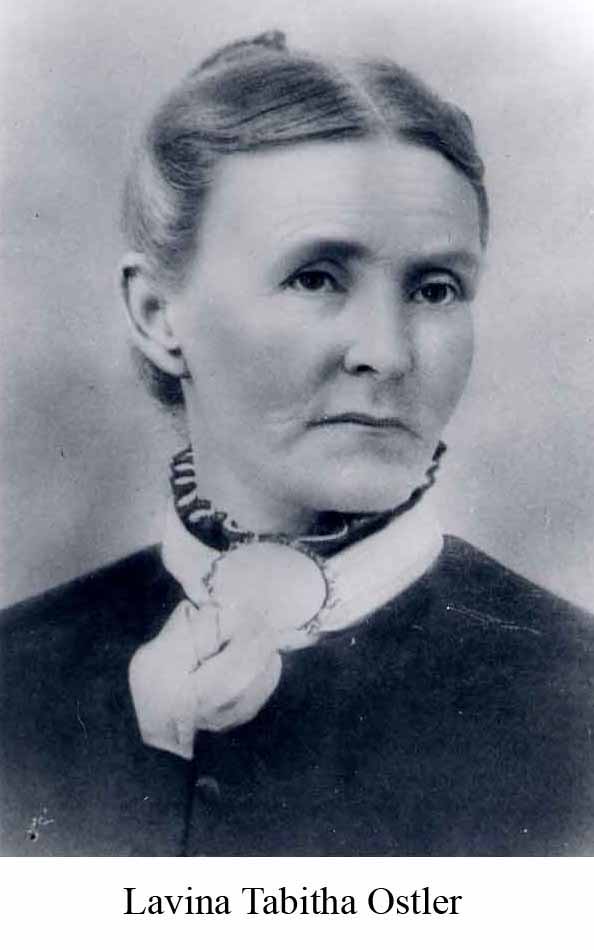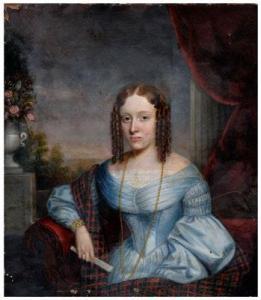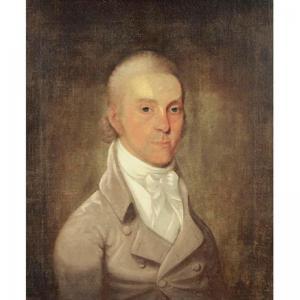2BU.S. Department of the Interior
3BA Guide to Tracing American Indian & Alaska Native Ancestry
Office of Public Affairs-Indian Affairs
1849 C Street, N.W., MS-3658-MIB
Washington, D.C. 20240
202-208-3710
www.indianaffairs.gov
Establishing American/NativeAmerican Indian or Alaska Native (AI/AN) Ancestry
There are many reasons why a person will seek to establish his or her ancestry as that of AI/AN.
One may be because the person wants to become an enrolled member of a federally recognized
tribe. Another may be a desire to verify a family tradition or belief that has been passed down
from generation to generation, whether based on fact or fiction, that he or she descends from an
AI/AN person or tribal community. Another could be a desire only to learn more about a
family’s history. Another may be to establish eligibility for public or private sector services or
benefits that are believed to be provided only to persons who are AI/AN.
When establishing descent from an AI/AN tribe for membership and enrollment purposes,
however, an individual must provide genealogical documentation that supports his or her claim
of such ancestry from a specific tribe or tribal community. Such documentation must prove that
the individual is a lineal descendent of an individual whose name can be found on the tribal
membership roll of the federally recognized tribe from which the individual is claiming descent
and is seeking to enroll.
If the end goal for doing such research is to help you determine if you are eligible for
membership in a tribe, you must be able to: 1) establish that you have a lineal ancestor –
biological parent, grandparent, great-grandparent and/or more distant ancestor – who is an
American Indian or Alaska Native person from a federally recognized tribe in the U.S., 2)
identify which tribe (or tribes) your ancestor was a member of or affiliated with, and 3)
document your relationship to that person using vital statistics records and other records a tribe
may require or accept for purposes of enrollment.
The BIA does not maintain a massive national registry or comprehensive computer database of
AI/AN individuals, nor can the bureau retrieve genealogical information about individuals from
such a source. The BIA’s offices, including the bureau’s headquarters in Washington, D.C.,
generally do not keep records on individual AI/ANs, and it does not maintain a national registry
of them. Nor does the BIA conduct genealogical research for the public. Through this guide,
however, we can offer suggestions on where to look and with whom to talk when trying to trace
ancestry to any of the Federally recognized tribes in the U.S.
Benefits and Services Provided to AI/ANs
• The Myth of the Monthly Check
It is a belief long held by many that AI/ANsreceive monthly checks from the Federal
government only because of their racial identity and nothing else.
While certain tribes and individual tribal members and their lineal descendants have received
Federal payments in the past, such payments have been made under specific responsibilities of
the Federal government to them that have resulted from treaty obligations (some treaties
included cash annuities for individual tribal members which ended with the death of the
recipient), the settlement of claims against the United States, and/or the collection of payments
3
for the use or exploitation of their trust lands and natural resources. However, very few judgment
fund per capita payments remain to be paid today (and not every settlement allows per capita
payments), and trust monies are collected by the Federal government and paid out only to those
tribes and individuals to whom they belong.
Generally, tribal revenues are used for the benefit of tribal members. Tribes who are able may
distribute payments to their enrolled members when tribal revenues from the lease or sale of
tribal assets – such as timber, coal, hydroelectric power, or oil and gas, for example – are
sufficient to do so. Another way tribes generate income is from developing successful
enterprises, including construction, gaming and other entertainment businesses, hospitality and
tourism businesses, arts and crafts, government contracting, and other ventures that create and/or
sell goods and/or services.
A tribe that makes per capita payments to its members may do so on a monthly, quarterly, annual
or occasional basis if its revenues from these various funding sources are sufficient and if its
members approve. In the case of Class III gaming, the Indian Gaming Regulatory Act requires
that income from casinos be used for tribal government operations, programs and services for
tribal members, although a portion may be used for per capita payments in accordance with an
approved per capita distribution plan.
However, there are many tribes that do not make per capita payments because either they lack
the revenues to do so or their tribal membership is too large for the revenues they do have.
Usually, such revenues are instead used for tribal government operations, programs and services.
There is a clear distinction between judgment funds and tribal funds. Judgment funds are
appropriated by Congress after the settlement of a claim filed against the United States by a tribe
or tribes, or AI/AN descendant groups, to resolve issues of tribal or individual assets (usually
land) taken without compensation. Tribal funds are derived from tribal assets.
While an individual does not have to be an enrolled member of a tribe who is party to a
settlement to receive a final judgment fund payment, he or she still must be deemed eligible
under the terms of the settlement. In the case of tribal funds, an individual must be an enrolled
tribal member to be eligible to receive per capita payments derived from tribal assets.
Compensation from the Alaska Native Claims Settlement Act of 1971 was placed in an entity
established by the Treasury Department called the Alaska Native Fund. Funds were disbursed to
village corporations and to individuals through regional corporations until 1981, when the
payments were completed.
The AI/ANs who have worked as civilian Federal employees or have served in the U.S. armed
forces can also receive Social Security and Federal retirement benefits, if they qualify.
•
0B
Services for AI/AN
Indian Affairs in the Department of the Interior encompasses the Office of the Assistant
Secretary-Indian Affairs, the Bureau of Indian Affairs and the Bureau of Indian Education (BIE).
4
Through its bureaus, offices and programs, Indian Affairs does its part to carry out the United
States’ government-to-government relationship with the Federally recognized tribes, and to
maintain its unique and continuing responsibility to the AI/AN people. Indian Affairs supports
and assists the tribes as they develop their governmental structures and operations; build strong,
safe communities; and provide services to their members.
Indian Affairs-funded or administered programs, which are comparable to state and local
government programs and services, include education, economic and workforce development,
social services, justice (law enforcement, corrections, and courts), infrastructure (road, bridges,
and dams), housing, realty, agriculture and range management, and natural resources
management and protection. They operate on federal Indian reservations and tribal trust lands
for the benefit of tribal members, and on trust or restricted-fee lands belonging to individual
Indian landowners.
Besides Indian Affairs, there are other Federal agencies with programs developed specifically to
serve AI/ANs and their tribal communities.
All AI/ANs, whether they live on a reservation or not, can, like other U.S. citizens, apply for and
receive Federally funded, state-administered services such as the Temporary Assistance for
Needy Families (TANF), Supplemental Security Income (SSI), the Food Stamp Program and the
Low Income Heating and Energy Assistance Program (LIHEAP). But they, like other citizens,
must be eligible under the rules that govern such programs.
Enrollment in a Federally Recognized Tribe • What is the purpose of tribal enrollment?
Tribal enrollment requirements preserve the unique character and traditions of each tribe. An
AI/AN tribe’s membership criteria is based on customs, history, traditions, language, religious
beliefs and practices, ancestry and tribal blood that are unique to it and which set it apart from
other tribes or tribal communities. Tribal membership may also convey the right to vote in tribal
elections, to serve in tribal leadership, to participate in the sharing of tribal assets, to use tribal
treaty rights (such as hunting, fishing, and gathering rights) within the tribe’s jurisdiction, to
participate in cultural or religious matters, to receive tribal services and benefits, and to exercise
other privileges or rights unique to tribal members. Such privileges and rights differ from tribe
to tribe.
• What are tribal membership requirements?
Tribal enrollment criteria are set forth in a tribe’s governing documents such as a tribal
constitution, articles of incorporation or ordinances. It will be necessary for individuals seeking
to establish a connection to a specific tribe or tribal community through enrollment to contact the
tribe or tribal community directly for information about its enrollment requirements and
application process. You can find contact information for all of the Federally recognized tribes
in the U.S. by clicking on the “Tribal Leaders Directory” link on the Indian Affairs website
Document Library page at http://www.indianaffairs.gov/DocumentLibrary/index.htm.
5
Uniform membership requirements among all tribes do not exist as criterion varies from tribe to
tribe. However, it can be said that two commonly found requirements for membership are: 1)
lineal descent from someone named on the tribe's base roll [a "base roll" is a tribe’s original list
of members as designated in a tribal constitution or other document specifying enrollment
criteria] or 2) lineal descent from a tribal member who descends from someone whose name
appears on the base roll. Other conditions such as tribal blood quantum, residency, or continued
contact with the tribe also are common.
• How do I apply for enrollment in a tribe?
A person may only be enrolled in a tribe where they are eligible for enrollment. If a person can
prove ancestry from several tribes and is enrollment-eligible in more than one, they may only be
enrolled in one tribe at a time (unless a tribe allows otherwise). After you have completed your
genealogical research, documented your ancestry, and through that determined your ancestor’s
tribal identity or affiliation, you are ready to contact the tribe directly to obtain information about
its enrollment criteria and application process.
Rarely is Indian Affairs involved in tribal enrollment and membership matters. Tribal enrollment
is considered an internal matter governed by the tribe in accordance with its rules. Each tribe
determines whether an individual is eligible for membership, and each tribe maintains its own
enrollment records, including records on past members. To obtain information about your
eligibility for membership, you must contact the tribe rather than Indian Affairs.
• How do I contact a federally recognized tribe?
You can find contact information for the federally recognized tribes by clicking on the “Tribal
Leaders Directory” link at http://www.indianaffairs.gov/DocumentLibrary/index.htm. The
Directory, which is published by the Bureau of Indian Affairs, provides contact information for
all of the federally recognized AI/AN tribes in the U.S., as well as Indian Affairs program offices
and BIA regional offices and agencies. You can obtain a copy of the Directory by downloading
or printing it from the website, or by calling the BIA Office of Indian Services at 202-513-7640.
Doing the Genealogical Research
• Will I need to use a computer and the internet?
Yes. Computers and the internet are tools to help you search for information that can help you
identify and document a connection to a specific tribe or tribal community. There are many
organizations and individuals who have made available on the internet records, images and other
documents useful to researching ancestry. If you do not have a personal computer or internet
access, you can check with a public library or community college in your area about using their
resources to do research. There are many sites dedicated to genealogical research. Some sites
charge for their services. We do not recommend or endorse any of them.
6
Become familiar with the use of a search engine to find web sites that are of interest to you.
Search engines are computer programs that search the internet for specific words, that you enter,
listed in meta tags of the web site. Using search words or phrases such as “American Indian
genealogy,” “Alaska Native genealogy,” “Native American genealogy,” or “tracing American
Indian (or Alaska Native or Native American) ancestry” can help you locate useful information.
• How do I begin the search for my ancestors?
Start your genealogical research with yourself and your family history. Start with current and
historical records that you already have on hand such as letters, journal, diaries, etc., that belong
to you and/or your immediate biological family. If you or a lineal ancestor is not currently a
member of a federally recognized tribe, band or group in the U.S., your research can begin with
public or other non-Indian records such as those maintained by state and local governments,
churches, schools, libraries, newspapers, and historical societies.
You should locate all the information you can about your lineal ancestor to determine the
person’s tribal identity as that is the most important piece of information to help one find a
specific tribe or tribal community. Although a vital statistics record is very important because it
shows a person name, and the life event (birth, marriage, divorce, death) date and place, it might
not list a person’s tribal identity. If a vital statistics record indicates racial or ethnic identity,
check to see if it identifies the person as American Indian, Alaska Native or Native American. If
not, you will not be able to use that record to help you document them as AI/AN.
• Where can I look for information?
We suggest the following as sources of information:
AT HOME :
The first place where you can begin to do your genealogical research is at home. Valuable
information can be found in newspaper clippings, military service records, birth and death
records, marriage licenses, divorce records, and family bibles, personal journals, diaries, letters,
scrapbooks, backs of pictures and baby books.
Relatives may are another good source of information about an ancestor you are doing research
on. Visiting with or writing to family members to find out if they have genealogical material may
be necessary. If another family member is working on a family history, check to see if they can
share information with you, or answer any questions you have.
ON THE LOCAL AND STATE LEVEL :
It is often helpful to check school, church (baptismal records), and county courthouse records for
information. Historical and genealogical information also can be found in other civil records at
local courthouses such as deeds, wills, land or other property conveyance documents.
Newspapers are also a good source of information; an ancestor may have been the subject of or
7
mentioned in a news article and obituaries will provide many details about the lives of their
subjects.
Prior to the 20th century, information about births, marriages, divorces and deaths was usually
kept (if at all) by family members. In the modern era, state governments issue and maintain vital
statistics records. They did not being keeping birth and death records until about 1890 to 1915,
so searches in state records for ancestors who were born or died before that time may be limited
or difficult to find. To obtain a vital statistic record, you must contact the department, bureau or
office that handles vital statistics records for the state where the life event took place. Each state
has its own rules for who may request a vital statistics record and its own process for requesting
one (including any fees it may charge). State vital statistics records offices may be found using
the internet.
IN PUBLIC LIBRARIES AND OTHER REPOSITORIES :
Visiting the local library is a very good starting point for gathering facts about AI/ANs and their
tribes. A wealth of information exists concerning the history of tribes, tribal cultures, historical
tribal territories, and tribal migration patterns. Most libraries also have books on how to do
genealogical research. Genealogical research books give a good understanding of standard
research techniques.
You can also contact genealogical organizations, historical societies, and other private
institutions.
ON THE FEDERAL LEVEL:
• Records Concerning the Public
The National Archives and Records Administration (NARA) is the repository and archivist for
all federal records. The records it holds and the information it provides are very useful to anyone
interested in genealogical research. One example is census records. Census records are a very
good source of information for persons trying to locate and identify their ancestors in the U.S. In
the 19th century, the BIA, which was established in 1824, carried out census counts of American
Indians living on reservations. In 1902, Congress enacted legislation creating a permanent
census office in the Interior Department. By 1913, the U.S. Bureau of the Census was firmly
established in the Department of Commerce.
NARA has Federal census records from 1790 to 1940, including BIA American Indian census
records. NARA assigns numbers to each record group. The following are some of those to look
for when doing AI/AN ancestry research at NARA:
• Record Group Number 29: Records of the Bureau of the Census
• Record Group Number 48: Records of the Office of the Secretary of the Interior
• Record Group Number: 75: Records of the Bureau of Indian Affairs, 1973-1989
8
NARA also has military service records, passenger arrival records, and other records of value to
persons involved in genealogical research. You can even find the Dawes Roll if you are
researching ancestry from any of the Five Civilized Tribes in Oklahoma.
To learn about the kinds of AI/AN records NARA holds, and how to access or obtain copies of
them, visit http://www.archives.gov/research/genealogy/ or call:
U.S. National Archives and Records Administration 1-866-272-6272
• Records Concerning AI/ANs
If you have identified your ancestor’s tribal affiliation, now you can proceed to begin researching
records about the tribe. The American Indian records collection at NARA includes special
censuses, school records, and allotment records. For more information concerning the special
censuses of various tribes, NARA offers:
Microfilm Publication M1791
American Indian Censuses
“The Special Census of Indians, 1880”
• BIA Offices
BIA regional offices (and agencies may be additional sources of information on an ancestor if: 1)
your ancestor’s estate was probated through the bureau because he or she had land in trust with
the bureau and/or received income derived from federal Indian trust lands and/or assets, 2) his or
her name appears on a tribe’s base membership roll, a copy of which rests with the regional
office or agency that services the tribe, or 3) his or her name appears on a judgment distribution
roll developed as part of the settlement of a tribal claim against the United States.
The BIA, however, does not maintain current or historic records of all individuals who possess
some degree of AI/AN blood. The BIA holds current rather than historic tribal membership
enrollment lists. These lists (commonly called "rolls") do not have supporting documentation
such as birth certificates for each tribal member listed. The BIA created these rolls while the
BIA maintained tribal membership rolls, which lasted until about the 1980s. Please note that:
The BIA no longer has extensive involvement in tribal membership.
Current Federal policy and case law limits the involvement of the BIA in
tribal membership matters unless mandated by congressional
legislation, or is required by the tribe's governing document or
otherwise requested by the tribe.
There are instances where the BIA continues to manage a tribe’s enrollment records and
enrollment application process functions, either because the tribe is too small to handle these
functions itself or because it chooses not to. However, a person seeking to enroll with the tribe
must still be eligible under its enrollment criteria.
9
When you contact a BIA regional office or agency, be prepared to give the name of the tribe, the
name(s) and birth date(s) of your lineal ancestor(s), and your relationship to such ancestor(s).
You must provide specific details, such as a female ancestor’s maiden and married names,
Another source of information is official correspondence sent by a BIA regional office (or area
office) or agency, or the Secretary of Department of the Interior, to you or your ancestor that
give details about a specific tribe or reservation, or any description or explanation of matters
relating to tribal enrollment, leasing of trust lands or assets, probating an Indian estate, payment
of a debt owed to the BIA, or other matters that fall under the BIA’s mission, functions and
responsibilities. When contacting the regional office or agency that issued the correspondence,
have the document(s) with you and provide as much information from it as you can, including
the date it was issued.
The Privacy Act, 5 U.S.C. §552(a), protects personal information contained in current tribal
membership rolls and lists that the BIA maintains. Submitting a request for genealogical
information under the Freedom of Information Act, 5 U.S.C. §552, is not necessary for records
compiled and published by private institutions or that are available in census records declassified
by NARA.
The Tribal Leaders Directory includes contact information for all BIA regional offices and
agencies. They will be found at the beginning of each regional section of the Directory with the
tribal contact information immediately after. The sections are marked with the names of the 12
BIA regions.
• What do I do if I was adopted?
Generally, adoptions of AI/AN children have been handled in state courts under state laws.
When you are seeking to open sealed adoption papers, the BIA cannot help you. There are
organizations that can be found on the internet that may be able to assist you with information on
what procedures or information you might need. We do not endorse or recommend any of them.
You will need to obtain legal advice from an attorney that deals with this area of law.
If you have questions about the Indian Child Welfare Act of 1978 (ICWA), P.L. 95-608, which
allows federally recognized tribes to intervene in certain AI/AN child adoption situations, you
can contact a BIA regional social worker in any of the bureau’s 12 regional offices or contact the
National Indian Child Welfare Association (www.nicwa.org) for more information.
• Will a blood test or DNA test prove AI/AN ancestry?
Blood tests and DNA tests will not help an individual document his or her descent from a
specific Federally recognized tribe or tribal community.
The BIA does not regulate businesses that perform such tests, and does not validate their findings
nor accept their results as proof that an individual possesses blood quantum from a particular
tribe. The only value blood tests and DNA tests hold for persons trying to trace ancestry to a
particular tribe is that testing, if the tribe accepts it, can establish if an individual is biologically
10
related to a tribal member. Check directly with the tribe you are seeking to enroll to find out if it
will accept a blood test or DNA test as part of its enrollment application process.
Getting Help with the Research
If you are contemplating hiring someone to research your family history, professional
genealogists can charge fees on an hourly or flat-rate basis. For more information on what to
consider when hiring a professional, contact your local genealogical association or society, or
visit the NARA website at http://www.archives.gov/research/genealogy/.
If you do not wish to conduct your own research, researchers are available for a fee. Please
search the Board for Certification of Genealogists® or the Association of Professional
Genealogists® websites for their listings of genealogical researchers. Their names with websites
are:
Board for Certification of Genealogists Association of Professional Genealogists
http://www.bcgcertification.org http://www.apgen.org
Tracing Cherokee Indian Ancestry
We receive so many requests for information on how to trace Cherokee Indian ancestry,
therefore we have included this special section for it. The information below – “Locating the
Dawes Rolls” – is useful for anyone trying to find a lineal ancestor who was a member of one of
the Five Civilized Tribes in Oklahoma – the Cherokee Nation, the Chickasaw Nation, the
Choctaw Nation, the Muscogee (Creek) Nation and the Seminole Nation. These are the only
federally recognized tribes who use the Dawes Rolls as their base membership rolls.
• A Brief Overview of Cherokee History
About 200 years ago the Cherokee Indians were one tribe, or "Indian Nation," that lived in the
southeast part of what is now the United States. During the 1830's and 1840's, the period covered
by the Indian Removal Act, many Cherokees were forcibly moved west to what was then termed
“Indian Territory” and that is now the state of Oklahoma. A number of Cherokees remained in
the southeast and some gathered in North Carolina, where they purchased land and continue to
live to this day. Others went into the Appalachian Mountains to escape being moved west and
many of their descendants may still live there now.
Today, individuals of Cherokee ancestry fall into at least one of the following categories:
(1) Living persons who were listed on the final rolls (Dawes Commission Rolls)
of the
HUCherokee Nation of OklahomaUH, now known as the Cherokee Nation, that
were approved and their descendants. These final rolls were closed in 1907.
(2) Individuals enrolled as members of the
HUEastern Band of Cherokee
Indians
UH of North Carolina and their descendants who are eligible for
enrollment with the Band.
11
(3) Persons on the list of members identified by a resolution dated April 19, 1949,
and certified by the Superintendent of the BIA’s Five Civilized Tribes Agency,
and their descendants who are eligible for enrollment with the
HUUnited Keetoowah
Band of Cherokee Indians
UH of Oklahoma.
(4) All other persons of Cherokee Indian ancestry.
(1) CHEROKEE NATION:
After about a half century of self-government, a law enacted in 1906 directed that final rolls be
made and that each enrollee be given an allotment of land or paid cash in lieu of an allotment.
The Cherokee Nation in Oklahoma, a federally recognized tribe, formally organized in 1975 with
the adoption of a new constitution that superseded one from 1839. The new constitution
established a Cherokee Register for the inclusion of any Cherokee person for membership
purposes in the Cherokee Nation. Members must be citizens as proven by reference to the Dawes
Commission Rolls. Included in this are the Delaware Cherokees of Article II of the Delaware
Agreement dated May 8, 1867 (Delaware Indians who were made members of the Cherokee
Nation), and the Shawnee Cherokees of Article III of the Shawnee Agreement dated June 9,
1869 (Shawnee Indians who were made members of the Cherokee Nation), and/or their
descendants.
P.L. 100-472 authorizes, through a planning and negotiation process, Indian tribes to administer
and manage themselves programs, activities, functions, and services previously managed for
them by the BIA. Pursuant to P.L. 100-472, the Cherokee Nation of Oklahoma has entered into a
self-governance compact and now provides to their members those services previously provided
by the BIA. Enrollment and allotment records also are maintained by the Cherokee Nation. Any
questions with regard to Cherokee Nation ancestry and/or enrollment should be referred to:
Cherokee Nation
P.O. Box 948
Tahlequah, OK 74465
Phone: (918) 456-0671; Fax: (918) 458-5580
HUwww.cherokee.orgUH
(2) EASTERN BAND OF CHEROKEE INDIANS:
The Eastern Band of Cherokee Indians in North Carolina is also a federally recognized tribe. It
has its own base membership roll, called the Baker Roll, and its own enrollment criteria.
Inquiries about the tribe’s enrollment criteria or information shown in the records may be
addressed to the tribe at:
Eastern Band of Cherokee Indians
Qualla Boundary, P.O. Box 455
Cherokee, NC 28719
Phone: (828) 497-7000; Fax: (828) 497-7007
HUwww.cherokee-nc.comUH
12
(3) UNITED KEETOOWAH BAND OF CHEROKEE INDIANS:
By the Act of August 10, 1946 (60 Stat. 976), Congress recognized the United Keetoowah Band
of Cherokee Indians in Oklahoma (UKB) for the purposes of organizing under the Oklahoma
Indian Welfare Act. In 1950, the UKB organized under a constitution and by-laws approved by
the Secretary of the Interior. Members of the UKB consist of all persons whose names appear on
the list of members identified by a resolution dated April 19, 1949, and certified by the
Superintendent of the BIA’s Five Civilized Tribes Agency on November 26, 1949Information
about ancestry from this tribe and its enrollment requirements may be obtained by contacting:
United Keetoowah Band of Cherokee Indians in Oklahoma
P.O. Box 746
Tahlequah, OK 74465
Phone: (918) 431-1818;Fax: (918) 431-1873
http://www.keetoowahcherokee.org/
(4) ALL OTHER PERSONS OF CHEROKEE ANCESTRY:
Information about any Cherokee ancestry of individuals in this category is more difficult to
locate, largely because the Federal government has never maintained a listing of all Cherokee
Indians and their descendents that also shows their tribal affiliation, degree of Cherokee Indian
blood, or other data. If you are trying to establish Cherokee ancestry, you may want to follow the
suggestions for researching American Indian ancestry mentioned in this guide.
• Locating the Dawes Rolls
The Dawes Commission was organized in 1893 subsequent to the passage of the General
Allotment Act that sought to break up the reservation lands of the Five Civilized Tribes in what
is now Oklahoma. It was to accept applications for tribal enrollment from American Indians of
the Five Civilized Tribes who resided in the Indian Territory, which later became the eastern
portion of Oklahoma, between 1899 and 1907.
There are several places to get access to the Dawes rolls to see if your ancestor is listed. Here
are three locations:
National Archives and Records Administration
http://www.archives.gov/research/native-americans/dawes/intro.html
1-866-272-6272
Oklahoma Historical Society
800 Nazih Zuhdi Drive
Oklahoma City, OK 73105
Phone: (405) 521-2491
http://www.okhistory.org/
Tulsa City-County Library
400 Civic Center
Tulsa, OK 74103
Phone: (918) 549-7323
http://www.tulsalibrary.org/
